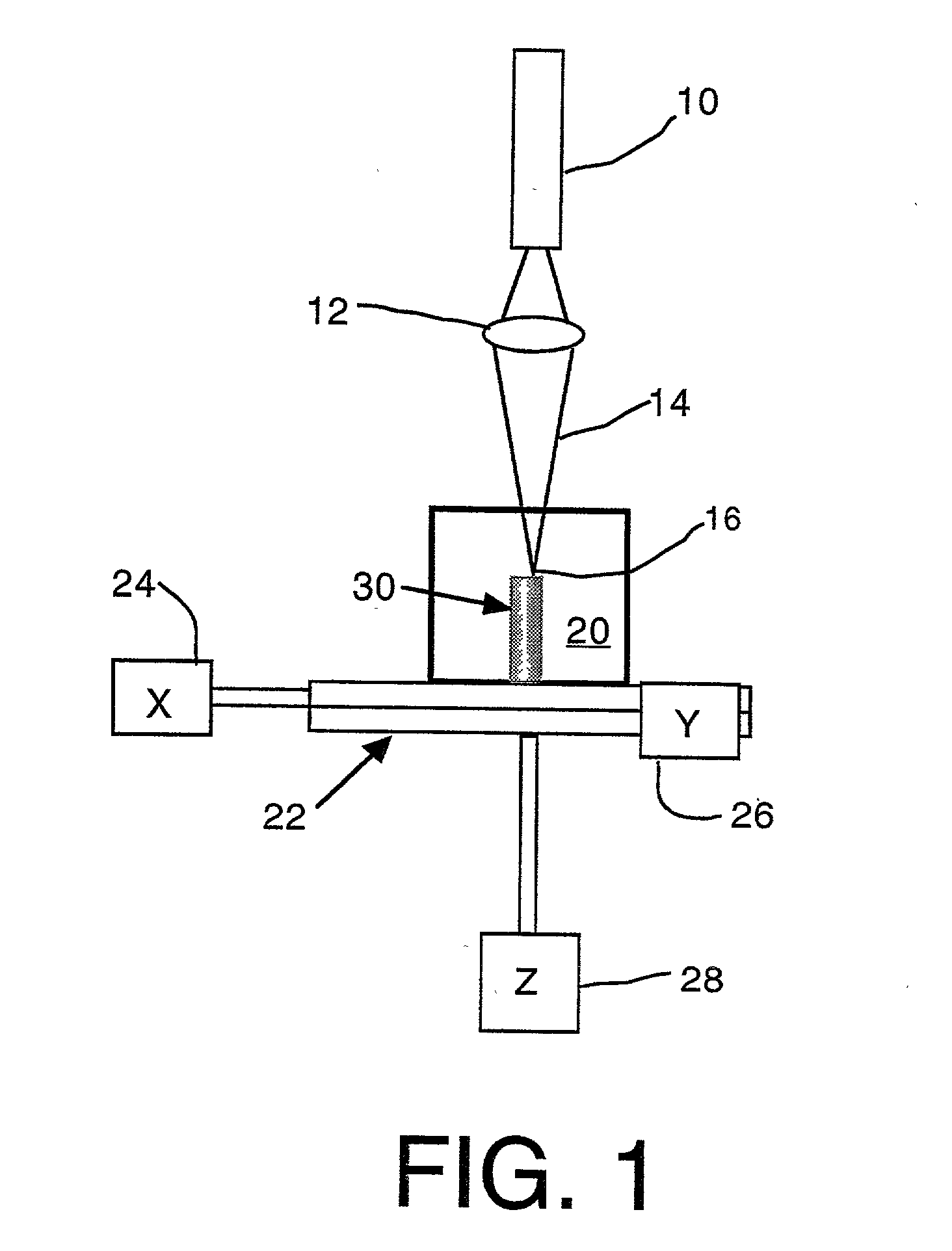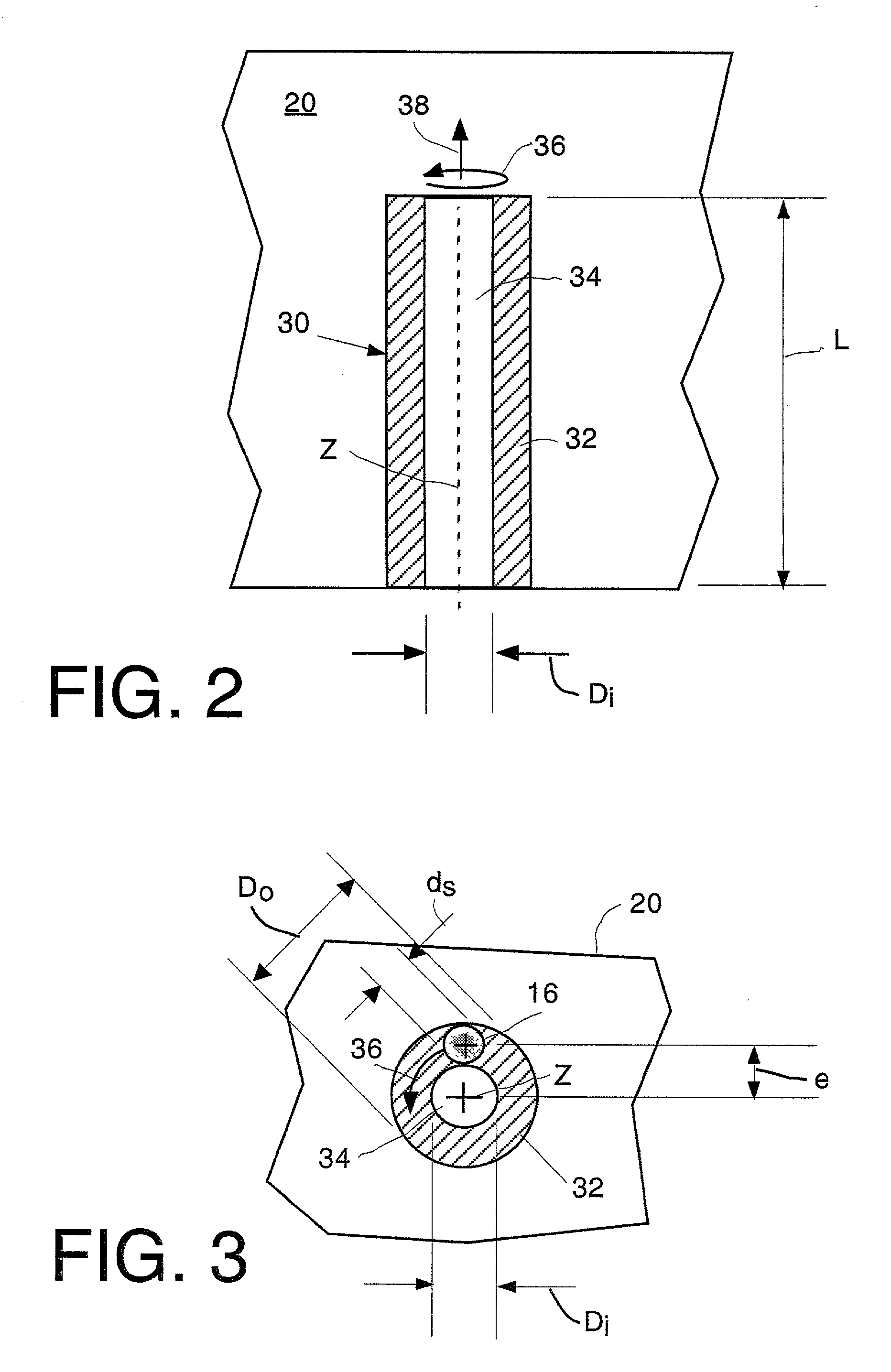Laser-written cladding for waveguide formations in glass
a technology of waveguide formation and laser writing, which is applied in the direction of photomechanical equipment, instruments, manufacturing tools, etc., can solve the problems of limiting the minimum radius of curvature and the self-limiting of desired localized increases in refractive index, so as to improve contrast and reduce the effect of refractive index
- Summary
- Abstract
- Description
- Claims
- Application Information
AI Technical Summary
Benefits of technology
Problems solved by technology
Method used
Image
Examples
example 2
[0038] A similar amplifier laser is used to write a waveguide in an alternative single-crystal optical medium made of calcium fluoride (CaF.sub.2). The wavelength, pulse width, and repetition rate of the laser are the same as in Example 1, but the pulse energy is much lower. The focusing is provided by a 10.times.0.26 numerical aperture (NA) objective. Helical tracks are written along one of the crystal axes at an eccentric offset of 8 microns (.mu.m), a thread step of 3 microns (.mu.m), and a writing speed of 100 microns per second (.mu.m / s). A distinctive cladding portion circumscribing a remaining core portion is obtained at pulse energies of 0.5 microjoules (.mu.J).
[0039] At higher pulse energies (e.g., 20 .mu.J), control over the index profile of the waveguides is expected to be reduced. However, at somewhat lower pulse energies (e.g., 0.3 .mu.J), reductions in refractive index are still expected to be writeable into the calcium fluoride (CaF.sub.2). Below such an exposure thre...
PUM
| Property | Measurement | Unit |
|---|---|---|
| Time | aaaaa | aaaaa |
| Time | aaaaa | aaaaa |
| Diameter | aaaaa | aaaaa |
Abstract
Description
Claims
Application Information
 Login to View More
Login to View More - R&D
- Intellectual Property
- Life Sciences
- Materials
- Tech Scout
- Unparalleled Data Quality
- Higher Quality Content
- 60% Fewer Hallucinations
Browse by: Latest US Patents, China's latest patents, Technical Efficacy Thesaurus, Application Domain, Technology Topic, Popular Technical Reports.
© 2025 PatSnap. All rights reserved.Legal|Privacy policy|Modern Slavery Act Transparency Statement|Sitemap|About US| Contact US: help@patsnap.com



